
Background information
Nova Launcher: the best five francs ever invested in your phone
by Dominik Bärlocher
In general, we only hear about the retractable camera on the Vivo Nex S. The rest? Nobody seems to care. As if the quality of the photos didn't matter. But don't worry, I asked a few more questions.
We've already heard a lot of praise for the Vivo Nex S. According to the marketing pitch, the form factor is said to be revolutionary, innovative and futuristic. We're referring here to the retractable camera on top. Because if you want to take a selfie, it doesn't take more than a second for the camera to pop out so you can see yourself. If you deactivate it, it re-enters the chassis.
Vivo thus solves the problem of the notch, i.e. the notch for the camera and such, which is normally found at the top of the screen.
That's it. That's all there is to it. Want more info? From what we read, that's all there is to know...
<[[product:9161082]]
But I want to know more. Because the selfie camera doesn't interest me in the least. I've taken maybe a dozen selfies in my life and I've yet to make a video call. That's why I'm interested in everything except the retractable camera. I'll be talking about it in this article, of course, but that'll come from the pen of our video producer, Stephanie Tresch, who I dub the queen of selfies.
The retractable camera is far from the only thing the Vivo Nex S has going for it. At first glance, though, it looks like the brand is trying to hide something by only talking about the retractable camera. When you look at the specs, you quickly realise that Vivo could easily have opted for a different form of communication, such as "This is our phone... and, by the way, the camera comes out of the device."
With the Snapdragon 845 SoC (System on Chip), the Nex S is one of the most advanced mobile phones of the year. The Chinese manufacturer has packed 8GB of RAM under the bonnet, ensuring unprecedented speed. On a day-to-day basis, you don't notice whether Vivo delivers on this promise or not. Indeed, I don't think a normal user would notice the system's high performance beyond the 6GB, with the possible exception of a slightly higher maximum load.
Despite its 8GB, I don't really get the impression that the Nex S is that fast. This may also be due to the fact that animations and such in apps are always defined by the app itself. If the system can meet the definition specified by the software, the duration is always the same. WhatsApp will always take exactly the same amount of time to open your contact's profile screen, unless your phone is slow and old.
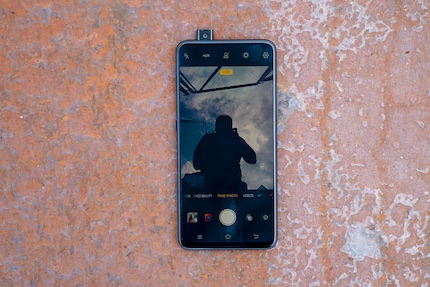
I notice the charging limit. As with 6GB phones, there's currently nothing on the market that will slow the Nex S down in any way. Many applications simply aren't designed yet for so many available resources. If your phone isn't from this year, it's probably only 4GB and should run smoothly. Apps don't yet know what to do with six or eight gigabytes of RAM.
I find it reassuring, though, to have a phone that I know won't be completely obsolete by next year.
The Vivo Nex S comes with a user interface called Funtouch. But it's anything but fun. So many Chinese manufacturers are making the same mistake of copying the iPhone. Unfortunately, the Vivo Nex S is no exception. For some reason, in China, Apple's user interface is considered the nec plus ultra. As Android and Apple iOS have a fundamentally different structure, this works well for Apple, but not so well for Android.
The screen would be so beautiful though: AMOLED with a resolution of 1080x2316 pixels. There would be so much to get out of it. But Vivo doesn't want to rush into anything, and makes some extremely strange design decisions.
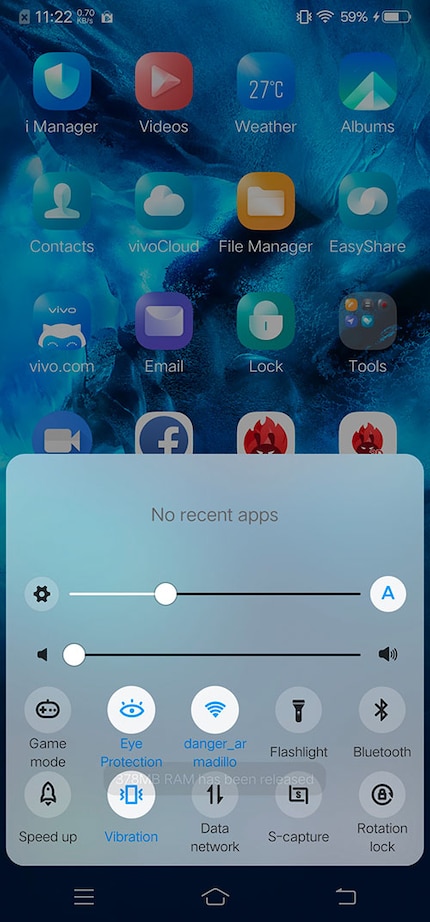
There's only one solution: make use of the Nova Launcher. It certainly doesn't solve the command centre problem, but at least you can take full advantage of the screen. Not only is the resolution high, but the sensitivity to touch is extremely high. The phone detects the slightest swipe and reacts quickly, correctly and reliably. It's almost a crime to have used such an old-fashioned layout. That's why you'll get so much more out of your Nex S with a Custom Launcher.
The fingerprint reader is housed under the screen. While the one on Huawei's Porsche Design Mate RS reacted very slowly, the reader on the Nex S is a little better. It's still slower than a traditional fingerprint sensor on the bottom or back of the phone, but I don't have to press the phone like crazy and it unlocks in less than a second. I'd love to have Face Unlock, as the system has already proved itself on a number of phones from other brands, such as Samsung, Huawei and Apple. However, as the front camera only comes out of the Nex when needed, you have to do without it.
But Funtouch isn't exactly a slam dunk. You quickly see the benefits of Surface in the settings: you've rarely had as much access to resources as with Vivo's Android version. I can access some developer options just like that. I can only speculate as to the reason, but perhaps it's because no Google services are pre-installed in China and some users go to the trouble of finding app packs on the net and installing them manually. It would also explain the prominent location of the VPN menu item.
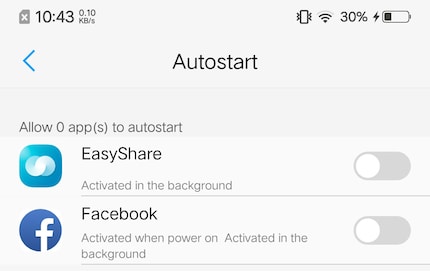
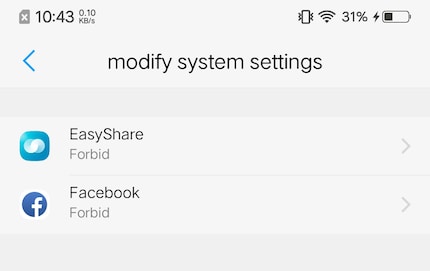
It seems that Chinese manufacturer Vivo wants to give the user as much freedom as possible.
I find that OK. It's not that I particularly like beauty filters for Asian faces in my camera apps, but I do believe that Chinese industry can stimulate the general American centrism of the tech industry. As much as I like Android and iOS, I find them a bit dated. If a Chinese manufacturer went wild and introduced something big, the big players in the market might question themselves and notice that one or two features are missing.
.
In practice, the adjustment options are satisfactory. But thankfully you only have to do them once for most of them, because it would still be too much of a pain if you had to repeat them every time.
So, if you're like me and not fond of notifications, take a moment and browse your apps. It only takes about 15 minutes depending on how many apps you have, but it would still be a lot more convenient if it could be done in one go.
Although the Nex S is a rectangle with rounded corners, taking a look at the back is definitely worth it. It's where Vivo's people prove that they don't just want to emulate giant Samsung and look a bit like Apple, but that they know what they want design-wise and are capable of implementing it too. When Samsung arrived last year with the S8 in shimmering Orchid Grey, several manufacturers followed suit. Honor's current flagship shines in around 30 shades, making it a superb focal point.
The Nex S bucks this trend. At first glance, it looks like the back is black. But in the light, you see a sort of rainbow effect. It's a bit reminiscent of looking at a CRT TV, where the dots on the screen are not one colour, but many.
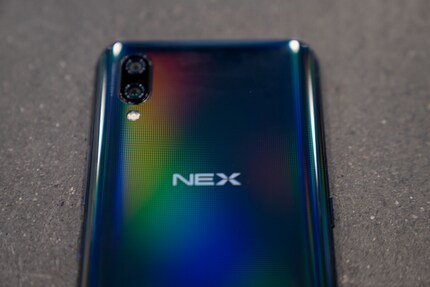
Where other phones rely on an aggressive shimmer, Vivo has opted for a pleasant and, more importantly, welcome counterpoint.
The dual photo sensor on the back has 12 megapixels with an f/1.8 aperture, placing the Nex S just behind the leader, the Huawei P20 Pro. The second photo sensor provides the depth-of-field effect and delivers 5 megapixels with f/2.4. Not bad at all.

The camera is very advanced and decides certain things for itself, which I sometimes find a little strange. For example, it lowers colours by several shades in an environment that's mostly greys, and makes people look pale and lifeless despite the HDR preset. You should also turn off the beauty mode that Asians love so much, unless you want to look artificially pink on your Instagram profile.
Reading the above passage again, I realise it sounds like I hate the camera. No, I don't. I'm moaning - as I do about pretty much every feature on the Vivo Nex S - as if I'm a guy who's had a lot of smartphones in my hands before, testing them out and just wanting each phone to make the most of its potential.
Let's get down to the thing the whole world seems to be interested in: the selfie camera. If, in the camera app, you switch from the main camera to the front photo module, the selfie camera comes out automatically. Underneath the rear shell is a motor that allows the system to move in and out of the chassis.
A spring provides a degree of shock resistance to the selfie camera. A sensor measures the pressure of the camera and pushes it back into the case if necessary. Vivo has also installed software mechanisms to protect the retractable camera. The selfie camera takes just over a second to pop out of the chassis and be operational. Other phones are certainly faster, but not more elegant.
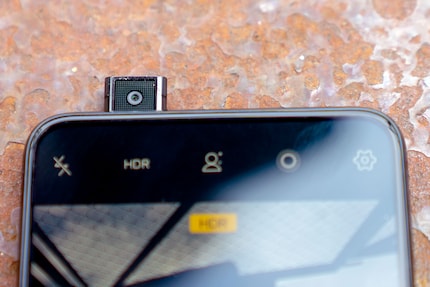
As I have little experience of selfies, I asked Stephanie Tresch, video producer and avid selfie taker, for her opinion.

The selfie camera delivers on its promise. What irritates me a little is the bluish tint to the videos, which I can't remove unless I invest a fair amount of time. Photos are just fine, and I'm also pleased with the sharpness of the image. When you zoom in, my eyes are always so sharp that it's more than good enough for Instagram and other social media.

Which bothers me a bit: in all the photos, I look like I'm lighter skinned and blonder, even without the beauty filter. It also looks like my skin and hair have a reddish tinge. But the only real point of criticism for me is that there's no shutter release on the side, which is absolutely fatal if you have small hands like mine. If that doesn't bother you, the Nex S is for you.
If you're worried about the selfie camera breaking: I've deliberately dropped the phone on the camera a few times and it's still just as it was, as is the quality of its photos.
It's time to draw a conclusion. The Vivo Nex S performs very well. Very. Even with all the ill will, it's impossible to justify the suspicion that Vivo is trying to hide something by focusing on the retractable camera. It's powerful, fast and the 4000mAh battery looks promising too.
Only the layout of the Funtouch surface needs urgent improvement: it's old-fashioned and really just a copy of Apple. With performance and hardware like this, the Nex S doesn't need it. As long as the device's functions aren't hijacked, the smartphone does what it needs to do. This is offset by settings that allow deeper interventions into the system than other Android models.
The main cameras are solid, but will never win awards. Their functions should still be improved, because they diminish the colours of the image a little too strictly and it often doesn't play with the light and the environment.
That's it.
That's it. That's it. By the way, the Vivo Nex S was the official phone of the 2018 Football World Cup, and everyone has already forgotten about it.
Journalist. Author. Hacker. A storyteller searching for boundaries, secrets and taboos – putting the world to paper. Not because I can but because I can’t not.